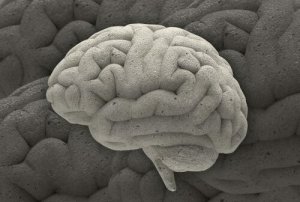Three Fascinating Neuroscience Cases

The most interesting part of many neuroscience cases is that they often lead to previously unknown knowledge about the brain. Sometimes, an illness or symptom offers clues that increase our understanding of the human mind.
Many of these neuroscience cases are notable due to the patient’s unique symptoms. The lives of people affected by these unusual conditions are often strange and fascinating. The truly valuable takeaway, however, is getting to observe the human brain functioning in a way no one has seen before.
The scientific world considers neurologist Oliver Sacks to be one of the most important educators of our time. Although his narration style and the extraordinary stories he tells about patients sometimes feel like science fiction, they couldn’t be more real. Today, we’ll share three of these fascinating cases.
“Any disease introduces a duplicity in life: an “it” with its own needs, demands, and limitations.”
-Oliver Sacks-

Three interesting neuroscience cases
1. Reminiscence
This is one of the most fascinating cases. The patient was a woman in her eighties who had a unique experience in 1979. She was in good health and had completely functioning mental faculties. However, she did have some hearing problems.
One night, she dreamed of her childhood in Ireland. In the dream, she heard the music of her past, the traditional songs, and typical dances. When she woke up, the music was still in her head. She thought that there was a radio on or that someone was playing a recording, although no one was there. She could hear all the musical notes perfectly, at a high enough volume to distract her from other things.
Before doctors could do a brain scan, the music started to disappear. It had been playing in her brain for months. Everything seemed to point to a problem in the temporal lobe associated with feelings of nostalgia. This case suggests that some places in the brain store all the experiences of your past, as if they were indestructible files.
2. The case of Madeline
Madeline was a 60-year-old woman with congenital blindness. That means that she was born blind and had never seen anything with her own eyes. She also had cerebral palsy and suffered from involuntary hand movements. With all of these conditions, you’d expect her to have severe cognitive delays, but Madeline was a very intelligent woman.
Those around her read to her constantly. As a result, she was cultured and a great conversationalist. She never learned to read Braille because, in her words, her hands were “useless, God-forsaken lumps of dough”. She said that they didn’t even feel like part of her body.
In spite of what she believed, Madeline’s hands were basically normal. For some reason, they didn’t move correctly. Oliver Sacks theorized that because her family did absolutely everything, she lost the use of her limbs. Thus, he started her on a rehabilitation program. At the end of the treatment, Madeline actually became a sculptor.

3. The man who fell out of bed
This neuroscience case is about a strange disorder called autotopagnosia, which is characterized by an inability to recognize your own body parts. A young man in a hospital had a very strange experience. He saw a leg on his bed that he said didn’t belong to him, so he tried to pick it up and throw it off the bed. When he did that, he fell out of bed.
The young man was terrified by the experience. For some reason, he believed that his left leg was amputated from his body and so the leg on the bed couldn’t possibly be his. The leg scared him. Medical professionals interviewed him, and since he couldn’t tell anyone where his real leg was, he kept hitting himself and trying to get rid of the strange limb.
Unfortunately, this case of mistaken identity has yet to be solved. Although there are many other similar cases similar in the books, no one knows the cause of the problem or how to help people with this condition.
All cited sources were thoroughly reviewed by our team to ensure their quality, reliability, currency, and validity. The bibliography of this article was considered reliable and of academic or scientific accuracy.
Sacks, O. (2016). El hombre que confundió a su mujer con un sombrero. Anagrama.
This text is provided for informational purposes only and does not replace consultation with a professional. If in doubt, consult your specialist.








